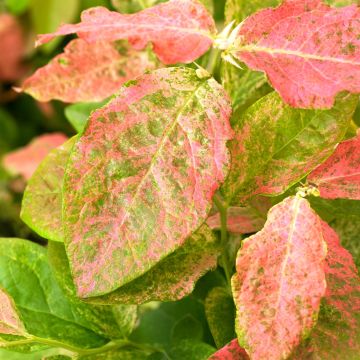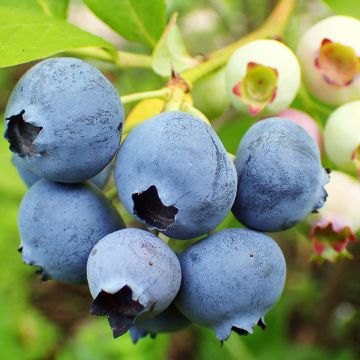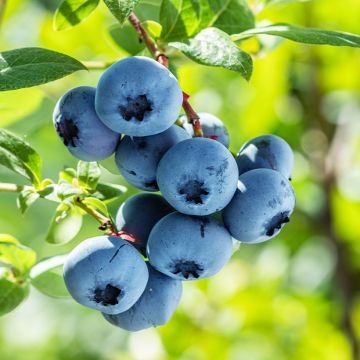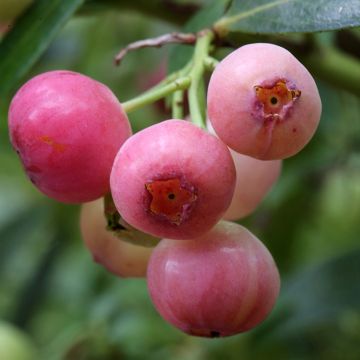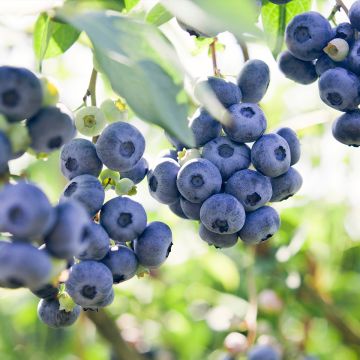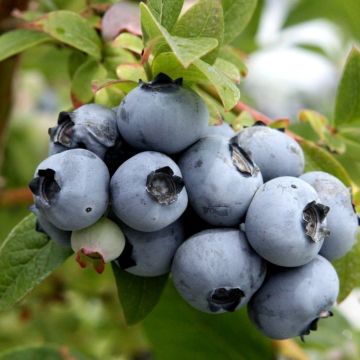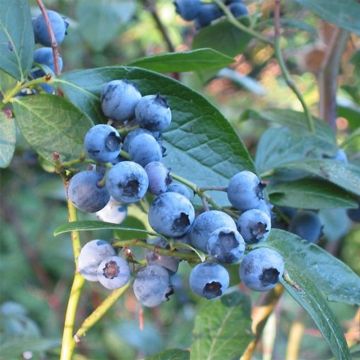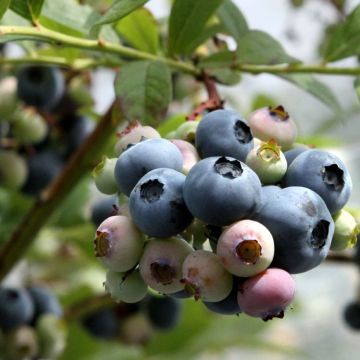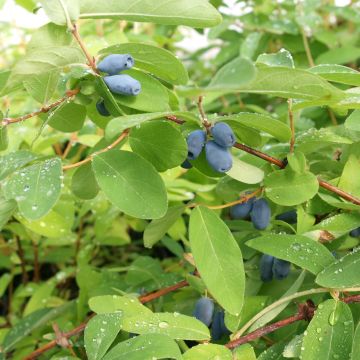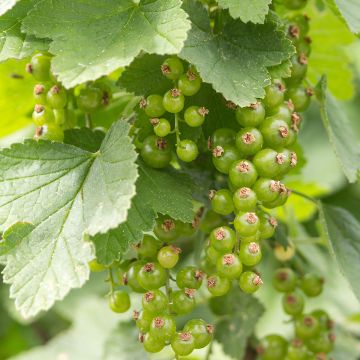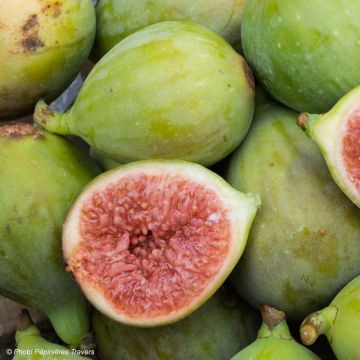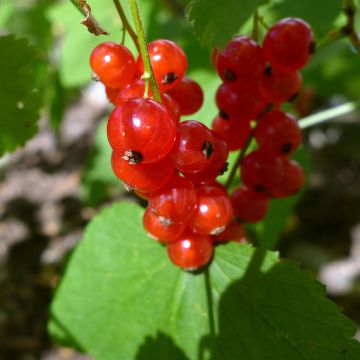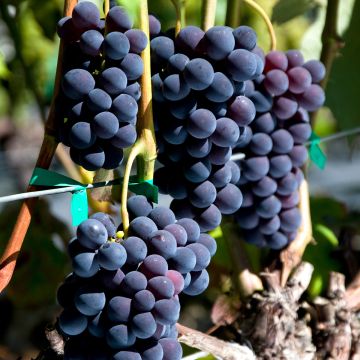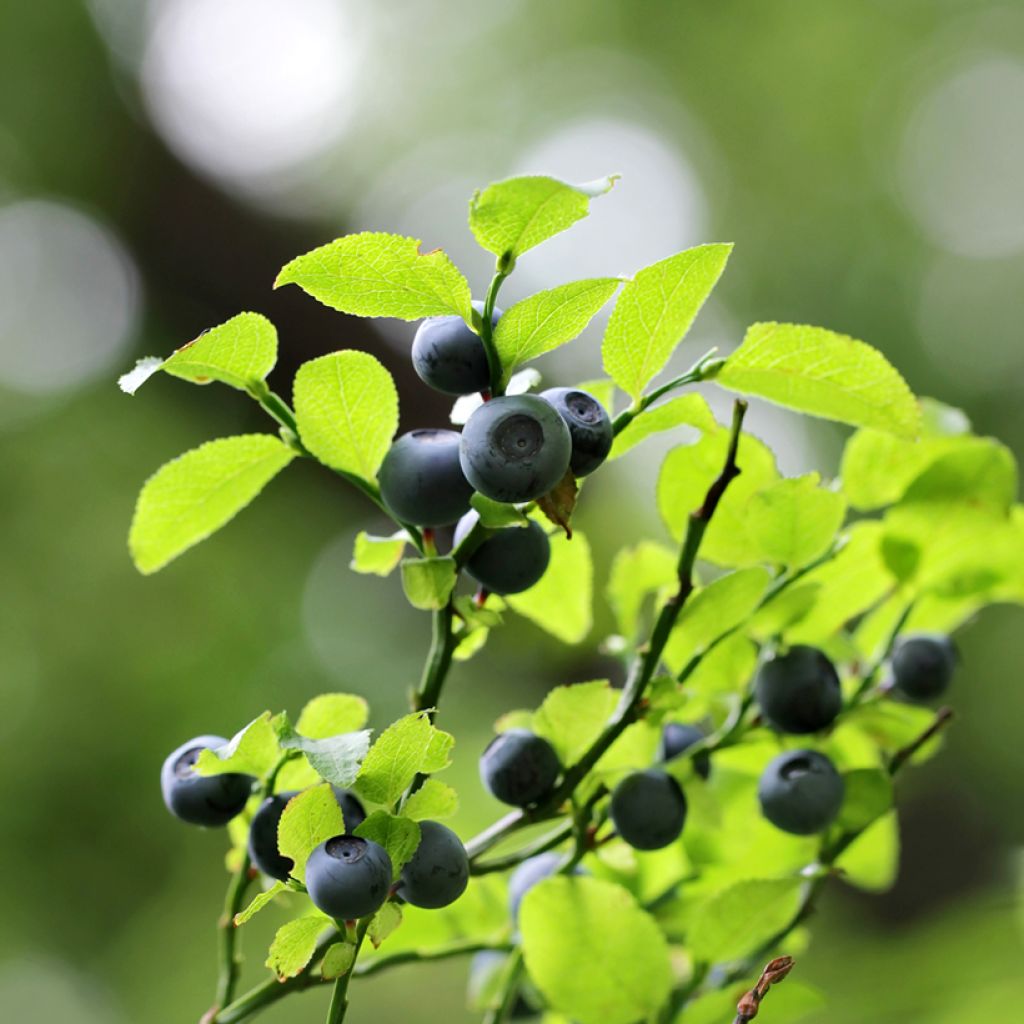

Myrtillier commun
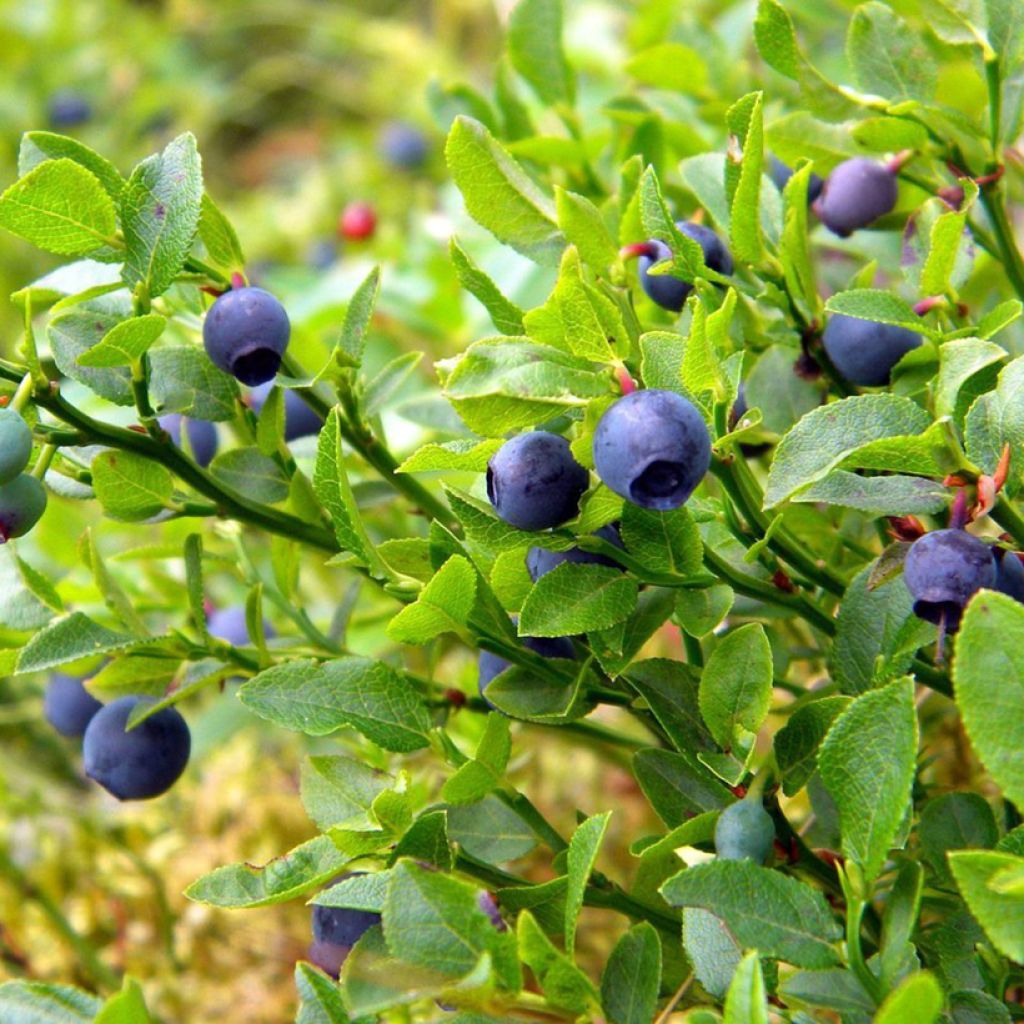

Myrtillier commun
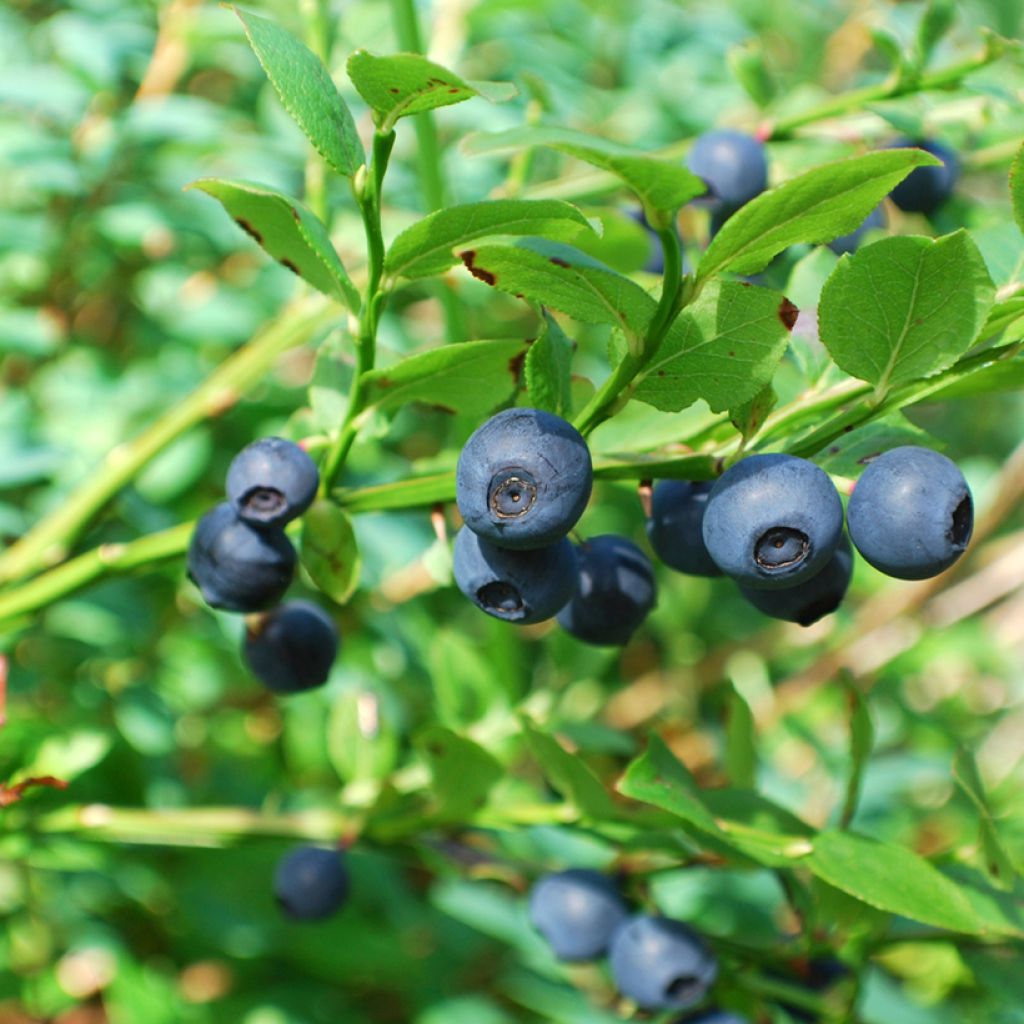

Myrtillier commun
Blueberry - Vaccinium myrtillus
Vaccinium myrtillus
European blueberry, Common bilberry, Blue whortleberry
Special offer!
Receive a €20 voucher for any order over €90 (excluding delivery costs, credit notes, and plastic-free options)!
1- Add your favorite plants to your cart.
2- Once you have reached €90, confirm your order (you can even choose the delivery date!).
3- As soon as your order is shipped, you will receive an email containing your voucher code, valid for 3 months (90 days).
Your voucher is unique and can only be used once, for any order with a minimum value of €20, excluding delivery costs.
Can be combined with other current offers, non-divisible and non-refundable.
Home or relay delivery (depending on size and destination)
Schedule delivery date,
and select date in basket
This plant carries a 6 months recovery warranty
More information
We guarantee the quality of our plants for a full growing cycle, and will replace at our expense any plant that fails to recover under normal climatic and planting conditions.

Description
Common Bilberry, known as Vaccinium myrtillus, grows spontaneously in mountains at low and medium altitudes. This low-lying shrub spreads horizontally over time to form dense mats. Its spring flowering produces delicious dark blue berries in summer, tastier than cultivated blueberries but less abundant. Very cold-resistant, it only grows in acidic and moist soil, unable to tolerate limestone or dry conditions. Its green foliage turns beautiful shades of red in autumn.
The Bilberry belongs to the Ericaceae family, mainly known in gardens for its numerous ornamental genera. In addition to the well-known Rhododendrons and Heathers, there are also edible fruit-bearing Ericaceae: mainly Strawberry Trees and the Vaccinium genus, which includes blueberries, cranberries, and lingonberries. The shrubby Bilberry (Vaccinium corymbosum), native to North America, is the one cultivated in gardens for its abundant and high-quality fruit production. The wild Bilberry is Vaccinium myrtillus, much rarer in cultivation, mainly appreciated by foragers in the wild. This botanical species is widespread in Europe and North America, up to boreal zones, demonstrating its excellent hardiness. It thrives in medium-altitude mountains, up to 2500 m, growing in forests, heathlands, and peat bogs, where it finds the necessary climatic and soil conditions to thrive.
The common Bilberry is a low-lying shrub, with angular, slightly winged, green, and very erect stems measuring 30 to 50 or 60 cm in height. They bear small deciduous, 2 to 4 cm long, elliptical leaves with fine teeth. They are light to medium green and turn red in autumn. Small flowers of about 5 mm in length appear around May, bell-shaped with fused petals (gamopetalous) and pale in colour (pink or greenish). They develop during summer to produce small almost black blueberries, with a chalky appearance, which are the wild bilberries, good to harvest in July-August. These berries have a very good nutritional profile, being lower in carbohydrates than cultivated blueberries while having an even better taste. They are rich in fibre, contain a wide variety of vitamins and have antioxidant properties. Above all, they are delicious to eat raw or cooked.
With its extreme hardiness (-30°C approximately), the common Bilberry only grows in acidic, non-limestone soils, as it would otherwise suffer from chlorosis and decline. It requires moist soil and is sensitive to dry heat. At higher altitudes, it can grow in full sun, but in lowlands, it will perform better in partial shade. It is important to understand that it is not an easy plant to cultivate and while it can form robust low mats in its natural habitat, it is another story in the garden. It is best suited for enthusiasts with a garden located in a favourable zone, such as a mountain foothill on siliceous soil. It will appeal to lovers of native wild plants. Plant it in the foreground of a bed that can also accommodate Mountain Laurels or Kalmia, which have similar requirements and will delight you with their magnificent flowering, consisting of a multitude of small coloured cups open in May-June. And in the background, plant Enkianthus campanulatus Red Bells, a rare but very decorative shrub with beautiful bicoloured red and white spring blossoms.
Report an error about the product description
Blueberry - Vaccinium myrtillus in pictures
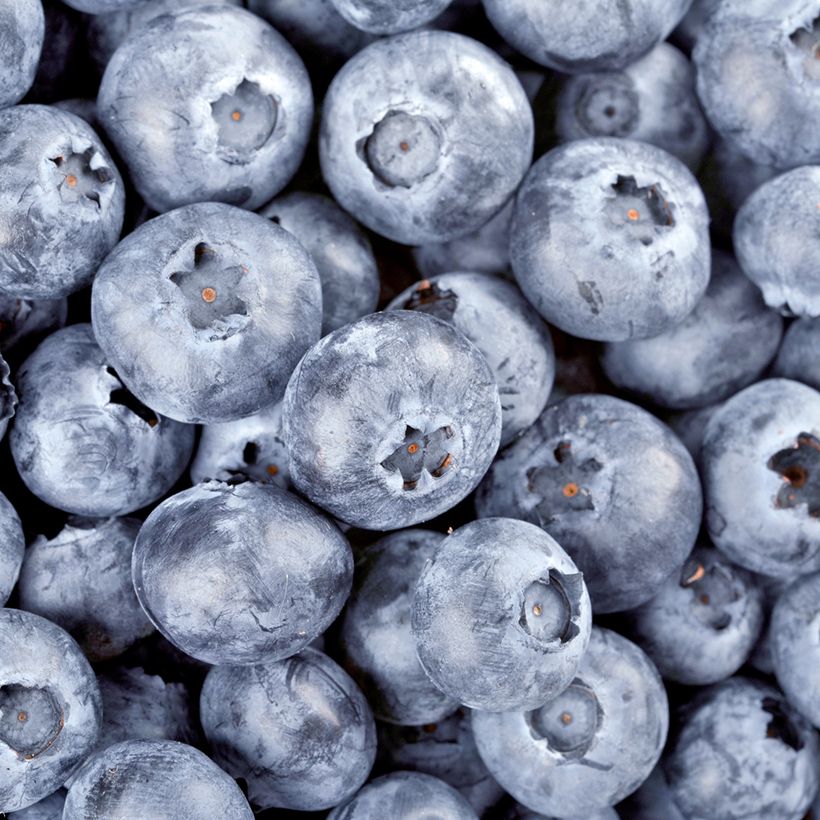

Plant habit
Fruit
Flowering
Foliage
Botanical data
Vaccinium
myrtillus
Ericaceae
European blueberry, Common bilberry, Blue whortleberry
Western Europe
Other Blueberry bush
View all →Planting and care
Plant Myrtillier in autumn during the frost-free period. This bush can be planted in full sun in cold climates, or alternatively in partial shade, as it does not tolerate hot and dry climates. However, it is very hardy (-30 °C) and has a particularly long lifespan (at least fifty years).
It must be planted in a highly acidic soil (pH between 4.5 and 5.5), as it absolutely cannot tolerate limestone. If your soil is not acidic enough, you can incorporate ericaceous soil or a mixture of regular soil, peat, and well-decomposed bark compost. The collar should be level with the ground. Soak the root ball in a bucket for fifteen minutes, then place it in the planting hole, backfill around it, and water generously to compact the soil.
The soil must remain consistently moist, but not waterlogged. If watering is necessary, use non-limestone and non-chlorinated water (e.g. rainwater). Limestone inevitably causes the yellowing of the leaves around the veins, which remain green. Eventually, the bush will decline. Mulch the base with shredded bark, straw, or fern leaves. It is sometimes a good idea to place a protective net if birds become too greedy during harvest. In spring, apply a small amount of well-rotted compost on the surface every year. The bilberry bush is not very susceptible to diseases and pests.
Planting period
Intended location
Care
This item has not been reviewed yet - be the first to leave a review about it.
Similar products
Haven't found what you were looking for?
Hardiness is the lowest winter temperature a plant can endure without suffering serious damage or even dying. However, hardiness is affected by location (a sheltered area, such as a patio), protection (winter cover) and soil type (hardiness is improved by well-drained soil).

Photo Sharing Terms & Conditions
In order to encourage gardeners to interact and share their experiences, Promesse de fleurs offers various media enabling content to be uploaded onto its Site - in particular via the ‘Photo sharing’ module.
The User agrees to refrain from:
- Posting any content that is illegal, prejudicial, insulting, racist, inciteful to hatred, revisionist, contrary to public decency, that infringes on privacy or on the privacy rights of third parties, in particular the publicity rights of persons and goods, intellectual property rights, or the right to privacy.
- Submitting content on behalf of a third party;
- Impersonate the identity of a third party and/or publish any personal information about a third party;
In general, the User undertakes to refrain from any unethical behaviour.
All Content (in particular text, comments, files, images, photos, videos, creative works, etc.), which may be subject to property or intellectual property rights, image or other private rights, shall remain the property of the User, subject to the limited rights granted by the terms of the licence granted by Promesse de fleurs as stated below. Users are at liberty to publish or not to publish such Content on the Site, notably via the ‘Photo Sharing’ facility, and accept that this Content shall be made public and freely accessible, notably on the Internet.
Users further acknowledge, undertake to have ,and guarantee that they hold all necessary rights and permissions to publish such material on the Site, in particular with regard to the legislation in force pertaining to any privacy, property, intellectual property, image, or contractual rights, or rights of any other nature. By publishing such Content on the Site, Users acknowledge accepting full liability as publishers of the Content within the meaning of the law, and grant Promesse de fleurs, free of charge, an inclusive, worldwide licence for the said Content for the entire duration of its publication, including all reproduction, representation, up/downloading, displaying, performing, transmission, and storage rights.
Users also grant permission for their name to be linked to the Content and accept that this link may not always be made available.
By engaging in posting material, Users consent to their Content becoming automatically accessible on the Internet, in particular on other sites and/or blogs and/or web pages of the Promesse de fleurs site, including in particular social pages and the Promesse de fleurs catalogue.
Users may secure the removal of entrusted content free of charge by issuing a simple request via our contact form.
The flowering period indicated on our website applies to countries and regions located in USDA zone 8 (France, the United Kingdom, Ireland, the Netherlands, etc.)
It will vary according to where you live:
- In zones 9 to 10 (Italy, Spain, Greece, etc.), flowering will occur about 2 to 4 weeks earlier.
- In zones 6 to 7 (Germany, Poland, Slovenia, and lower mountainous regions), flowering will be delayed by 2 to 3 weeks.
- In zone 5 (Central Europe, Scandinavia), blooming will be delayed by 3 to 5 weeks.
In temperate climates, pruning of spring-flowering shrubs (forsythia, spireas, etc.) should be done just after flowering.
Pruning of summer-flowering shrubs (Indian Lilac, Perovskia, etc.) can be done in winter or spring.
In cold regions as well as with frost-sensitive plants, avoid pruning too early when severe frosts may still occur.
The planting period indicated on our website applies to countries and regions located in USDA zone 8 (France, United Kingdom, Ireland, Netherlands).
It will vary according to where you live:
- In Mediterranean zones (Marseille, Madrid, Milan, etc.), autumn and winter are the best planting periods.
- In continental zones (Strasbourg, Munich, Vienna, etc.), delay planting by 2 to 3 weeks in spring and bring it forward by 2 to 4 weeks in autumn.
- In mountainous regions (the Alps, Pyrenees, Carpathians, etc.), it is best to plant in late spring (May-June) or late summer (August-September).
The harvesting period indicated on our website applies to countries and regions in USDA zone 8 (France, England, Ireland, the Netherlands).
In colder areas (Scandinavia, Poland, Austria...) fruit and vegetable harvests are likely to be delayed by 3-4 weeks.
In warmer areas (Italy, Spain, Greece, etc.), harvesting will probably take place earlier, depending on weather conditions.
The sowing periods indicated on our website apply to countries and regions within USDA Zone 8 (France, UK, Ireland, Netherlands).
In colder areas (Scandinavia, Poland, Austria...), delay any outdoor sowing by 3-4 weeks, or sow under glass.
In warmer climes (Italy, Spain, Greece, etc.), bring outdoor sowing forward by a few weeks.































